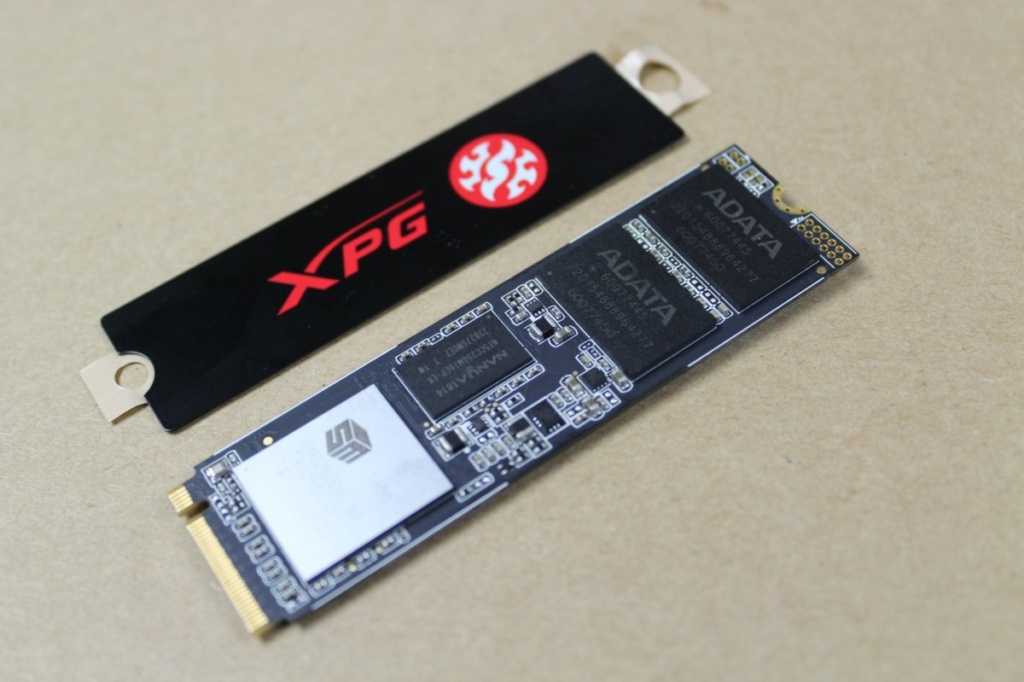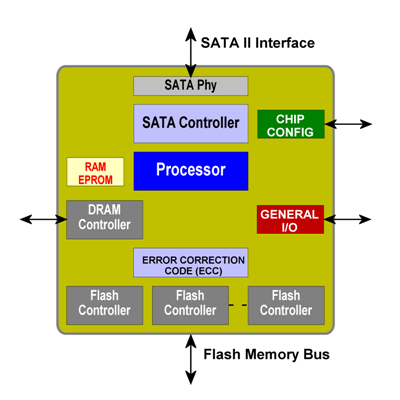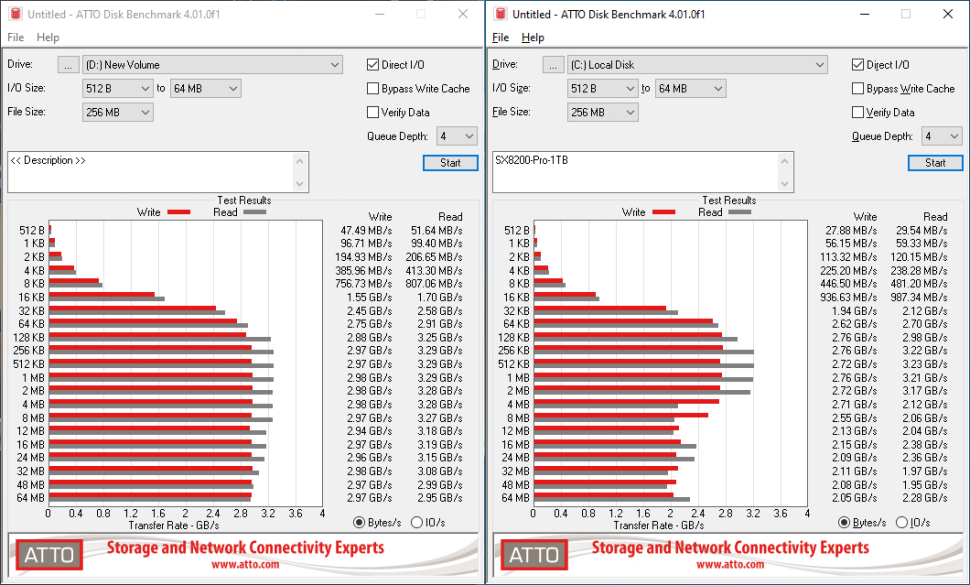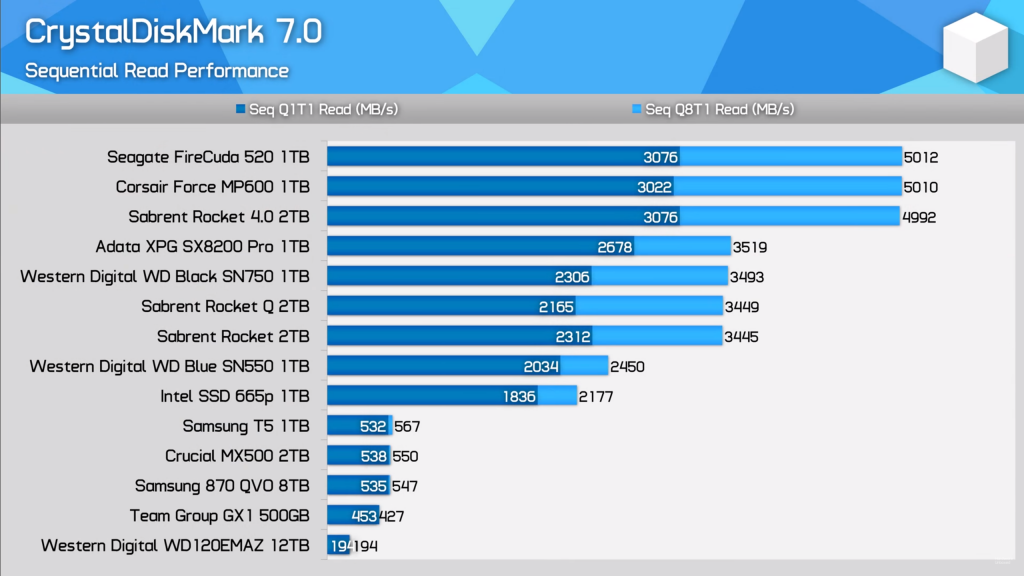The SX8200 Pro is a premium, performance-focused NVMe SSD that is meant to go head-to-head with the likes of the Samsung 970 EVO and the WD Black SN850. The drive comes in various capacities and can hit sequential read and write speeds of up to 3500 MB/s and 3000 MB/s respectively. These numbers are quite close to the theoretical maximum speeds allowed by the PCIe Gen 3 protocol. This places the ADATA SX8200 Pro squarely as a premium SSD option in the market. ADATA made quite a big mess, however, when it changed the controller and the NAND configuration of the drive recently. The even bigger mistake was that ADATA did not inform its customers in any way, shape, or form that it would be making that change. A manufacturer changing the internal components of a product is highly uncommon, let alone a change that has not been explained and justified to the customers. This led to a huge backlash from the PC hardware enthusiasts, and ADATA was forced to explain their actions. But should you worry about the change? If you have recently bought an SX8200 Pro brand-new, does it give you a cause for concern? In this article, we shall explore the details of the change that ADATA has made and the potential consequences that might ensue.
Original Configuration
Before we get into the details of the changes that ADATA has made to the SSD, we have to take a look at the original configuration of the drive prior to the change. The ADATA SX8200 Pro used the controller SMI SM2262EN in the original version, which is considered a relatively high-end and reliable controller in the SSD space. The controller has two Cortex R5 cores that typically operate at 625 MHz on most variants, while in the 1TB version of the SX8200 Pro, the controller’s cores are clocked at 650 MHz. The other significant change that ADATA made to the SX8200 Pro was to the NAND flash itself. The company first used the IMFT 64-layer TLC flash for the SX8200 Pro, which has been swapped out for the newer variants for a different flash type. Therefore, ADATA SX8200 Pro used some pretty high-end components in the original version. The two significant changes that ADATA made were to the controller and to the NAND flash.
Controller Change
ADATA swapped out the original SM2262EN controller for the slower-clocked SM2262G controller, without informing the public about the changes. It is highly uncommon for a company to swap out the internal components of an SSD, or any other piece of hardware for that matter, without informing the general public about its decision first. ADATA, however, did leave themselves some wiggle room in the first place, as they had just mentioned that the SSD uses an “SMI” controller on its spec sheet, which is still true. The problem with such a change is that it can lead the customers to buy a different product than the one that had been recommended to them by hundreds of media outlets. Most of the reviews of the ADATA SX8200 Pro SSD were made with the faster SM2262EN controller and were quite positive since the SSD is, in general, a good product. However, a customer buying the SSD today would not find the same internal components in it as the ones that got the SSD a recommendation in the first place. The controller change could have been ignored if the two controllers performed the same, but unfortunately, that is not the case. Tom’s Hardware’s testing shows that in theoretical workloads at least, the new SM2262G controller is slower. This is due to the fact that although the two controllers are built on the same silicon, the newer controller lacks the same performance-tuned firmware as the older EN model. The SM2262G models come with the same ROM as the standard SM2262 which is the ROM version SVN00235, while the SM2262EN models feature the ROM version SVN047. The newer ROM version contains hardware tweaks that improve the performance of the controller in certain situations. Moreover, the two controllers are clocked a bit differently. The two Cortex R5 cores on the SM2262EN are clocked at 625 MHz for the majority of the variants, with the controller on the 1TB variant being clocked at 650 MHz. The SM2262G that is now being used in the new SX8200 Pro SSDs is clocked at a slower 575 MHz. This is the most obvious change that has been observed between the two SSDs and of course, the customers of the newer variant are not happy with this change.
NAND Change
In addition to the controller change, ADATA also swapped out the NAND flash on the newer models. The IMFT 64-Layer TC Flash being used in the older SX8200 Pro units has been swapped out for Samsung’s previous-gen 64-Layer TLC V-NAND, which is often purchased by vendors on the spot market. The point to note here is that ADATA opted to go for Samsung’s previous-gen product instead of their current-gen offering, which could have provided the same or better performance but would have had a higher price as well. Due to these changes, not only does the controller run at lower speeds, but the flash channel interface also operates at a slower rate as well. The model with the Samsung flash reports interface speeds of just 525 MT/s on the new SSDs. Compare that to the 650 MT/s (or faster) rate of the older SM2262EN-flashed SSDs, and you can understand why ADATA really should have explained this change to their customers, or better yet, should not have proceeded with the change in the first place. If you are interested in learning more about the roles of different components in the performance of the SSD, you should definitely check out our comprehensive guide for buying an SSD in 2021.
ADATA’s Explanation
After community backlash and coverage from media outlets such as ServeTheHome and Tom’s Hardware, ADATA released the following official remarks: Explaining the performance change between the two controllers, ADATA added: It is quite clear from these remarks that ADATA is still adamant that the new drives deliver the same performance as the older ones. While ADATA has acknowledged the changes in the hardware, they are not yielding to the evidence that the newer controller may be slightly slower than the older controller in certain situations. Whether or not the end-user’s decision changes with ADATA’s explanation of the matter depends solely on the individual customer’s experience with the brand and their level of trust.
Change in Performance
So if you are in the market for a new performance SSD and you have your eyes on an ADATA SX8200 Pro, should you still buy one? Do the changes made by ADATA hold any significance to the average user? The answer to these questions is simple and complicated at the same time because whether or not you should still buy the SX8200 Pro depends on a couple of factors. If you are the kind of consumer to install an SSD and forget about it, then the SX8200 Pro is one of the best NVMe SSDs you can currently buy. The changes in the controller and the NAND will be nowhere near noticeable to the majority of the consumers. Moreover, as ADATA pointed out in their press release, the new XPG SX8200 Pro units do meet the published specs which say that the max performance of the drive is up to 3500 MB/s read and 3000 MB/s write speeds. The maximum 4K random read/write of 390,000 and 380,000 IOPS are the numbers that are published on the official spec as well, and the new controller does meet these theoretical maximums as well. However, in some niche theoretical scenarios, some changes might be observed in the raw numbers. For example, ServeTheHome and Tom’s Hardware compared the performance of the older and newer variants of the drives in ATTO, a popular storage benchmark. The numbers of the older drive (on the left) are significantly higher than those of the newer drive (on the right). This means that the intricate differences between the two controllers and the lower performance of the NAND flash do impact the overall performance of the newer drives in some way. Whether or not these differences are noticeable to the actual consumer in day-to-day use is another story that is a bit more complicated to explain. In general, such differences in the performance of two SSDs are not noticeable by the average user in day-to-day use, and the scenario with the ADATA XPG SX8200 Pro should be quite similar.
Should You Still Buy It?
The move to change the internal components of the drive without notifying the customers was an unwise one from ADATA, and this can set an unpleasant precedent in the industry that can be quite harmful to the consumers if it is exploited. If more and more companies try to change the internal configuration and hardware components of their products, then the consistency of performance between two different units of the same product can be called into question. Moreover, the integrity of the company and its review samples can be in jeopardy, as people would refuse to trust the reviews of a product that can have a variable internal configuration. All of these situations can be grossly exploited if other companies go down the same route as ADATA but in a more negative way. Thankfully, ADATA’s change was not nearly as impactful as it could have been. The newer controller and the changed NAND Flash do perform a bit slower in synthetic tests, but the drive still hits its advertised performance targets in theoretical situations and delivers the same general level of performance, all things considered. The ADATA SX8200 Pro is still a safe recommendation, as it is one of the best NVMe SSDs on the market at a reasonable price. The only problem, however, is that ADATA might have lost its customers’ trust in the process.
Final Words
While ADATA’s decision to not inform its customers and the general industry about its decision was an unwise move, the overall change of hardware is not nearly as bad as it had the potential to be. ADATA has since issued a press release, explaining their stance on the issue, and while they have not fully admitted to their mistake, they have pointed out some important factors in this whole situation. The SX8200 Pro is still a great SSD that leads the performance charts when it comes to NVMe SSDs at its price point. The newer controller and the changed NAND Flash might show slightly lower numbers in synthetic benchmarks, but the overall general performance of the drive remains the same. For some users, however, this explanation does not justify the lowered performance of the drive, and rightfully so. Many customers of the drive that bought it fairly recently, would feel hard done by considering the fact that the price for the drive has not changed after the hardware swap. Furthermore, many more customers might just take their business elsewhere since ADATA has set a negative precedent that can be exploited quite severely in the future as well. If they are comfortable changing the internal components to inferior ones without issuing a public explanation, the future might hold even worse offenses that they simply might not want to be a part of. The drive itself is still a solid recommendation, as it performs almost identically in most scenarios to the original drive. The whole reliability and trust factor around the drive, however, has completely changed for most customers, and might not return any time soon.
X-NAND Technology Explained – QLC Capacity at SLC SpeedsAdvanced SSD Buying Guide - NAND types, DRAM Cache, HMB ExplainedAMD’s Zen 4 CPUs Showcased With Phison Gen 5.0 SSDs and Micron’s 232 Layer NANDSK Hynix Has Acquired Intel’s SSD and NAND Flash Division




